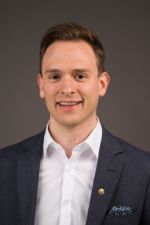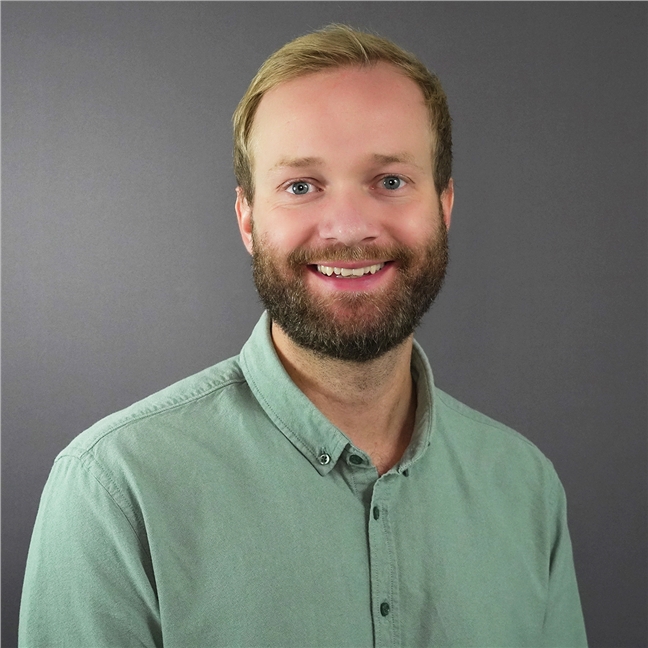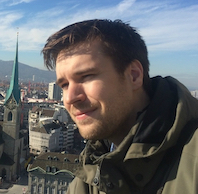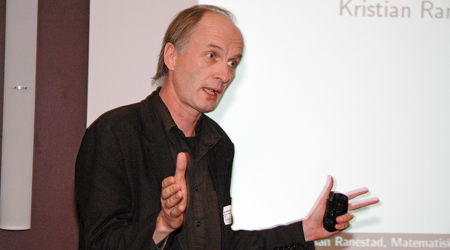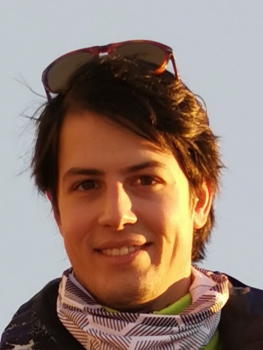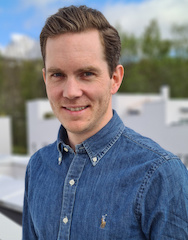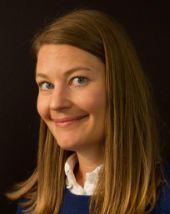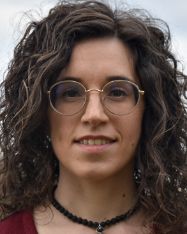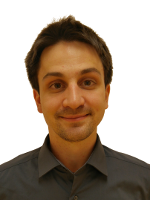Events - Page 14
Now it's time for the traditional Section 3 PhDs' & postdocs' gathering, which will take place in Abels Utsikt on October 12th, 2021, 09.30 - 16.30. All PhD students and postdocs have the opportunity to give a 15-minute talk on their research. In addition, Andrey Pilipenko (National Academy of Sciences of Ukraine/Igor Sikorsky Kyiv Polytechnic Institute) will give a talk on solving ODEs with non-Lipschitz coefficients by perturbation and Hao Tang (UiO) will introduce his research on stochastic fluid models. Welcome!
Abstract: My soft matter research group investigates the autonomous transformation of phospholipid agglomerates into membrane compartments through a sequence of topological changes on solid interfaces. This process is initiated by contact and wetting of artificially created as well as natural surfaces by the lipids, and proceeds via a network of interconnected lipid nanotubes to produce nearly uniform lipid bilayer compartments. Under minimal assumptions it is conceivable that such process could have occurred on the early Earth, where the autonomous formation of simple membrane compartments is presumed to have enabled encapsulation of nucleotides and prebiotic chemistry precursors. According to the currently accepted “bulk hypothesis”, such compartments have spontaneously formed under moderate environmental conditions from lipids suspended in bulk aqueous medium. Only very recently, surfaces have emerged as potential supporting structures for the self-assembly of prebiotic compartments. In my talk, I will report on new evidence for the involvement of surfaces in protocell nucleation and development. The talk will highlight the implications of the new findings for our understanding of possible origin of life processes, and argue that materials properties-driven autonomous processes on solid interfaces might have greater role in the development of life than currently considered.
Stable polynomials are a multivariate generalization of real-rooted univariate polynomials. This notion of stability for hypersurfaces can be extended to lower-dimensional varieties, giving rise to positively hyperbolic varieties. I will present results showing that tropicalizations of positively hyperbolic varieties are very special polyhedral complexes with a rich combinatorial structure. This, in particular, generalizes a result of P. Brändén showing that the support of a stable polynomial must be an M-convex set.
Marginal maximum likelihood estimation of longitudinal latent variable models for ordinal observed variables is challenging due to the high latent dimensionality required to accurately model residual dependencies for repeated measurements. We use second-order Laplace approximations to the high-dimensional integrals in the marginal likelihood function for longitudinal item response theory models and implement an efficient estimation method based on the approximations. The method is illustrated with items from the Montreal Cognitive Assessment, administered at four time points in a Hong Kong study of aging and well-being. We discuss the limitations of the proposed estimation method and outline a potential extension to the approach that uses a dimension-reduction technique.
In a famous paper, Geir Ellingsrud and Stein Arild Strømme use the Atiyah-Bott localization theorem in equivariant cohomology to compute the number of complex twisted cubics on a complete intersection. Motivated by results from A1-homotopy theory there is a new way of doing such enumerative counts which works over an arbitrary base field, not only the complex numbers. Recently, Marc Levine proved a version of Atiyah-Bott localization for this new way of counting.
In the talk I will recall the classical Atiyah-Bott localization theorem and explain how one can use it in enumerative geometry. Furthermore, I will explain how this new way of counting works and present some results about twisted cubics on complete intersections counted this way. This is based on joint work with Marc Levine.
Doctoral candidate Trygve Kvåle Løken at the Department of Mathematics, Faculty of Mathematics and Natural Sciences, is defending the thesis Experiments and new observation techniques related to wave-ice interactions for the degree of Philosophiae Doctor.
For the second talk, I will talk about how to relate relative Gromov--Witten invariants with relative periods via relative mirror symmetry and, given a degeneration, how relative periods and (absolute) periods are related on the mirror side.
Doctoral candidate Christian Pedersen at the Department of Mathematics, Faculty of Mathematics and Natural Sciences, is defending the thesis Elastohydrodynamic and capillary thin film flows at small scales for the degree of Philosophiae Doctor.
Template Model Builder (TMB) is an R-package that is well suited for performing fast inference with latent Gaussian models when the likelihood can be written as a three times differentiable function. TMB automatically differentiates the likelihood and utilizes Markov structures to efficiently integrate over latent variables with the Laplace approximation. In this seminar I will first introduce TMB and then elaborate a fish stock assessment model implemented with use of TMB that provides quota advice for approximately 25 different fish species in Europe.
A cohomology class of a smooth complex variety of dimension n has coniveau ≥c if it vanishes in the complement of a closed subvariety of codimension ≥c, and has strong coniveau ≥c if it comes by proper pushforward from the cohomology of a smooth variety of dimension ≤n−c. We show that these two notions differ in general, both for integral classes on smooth projective varieties and for rational classes on smooth open varieties. This is joint work with Olivier Benoist.
A graded Artinian Gorenstein ring A is a quotient of a polynomial ring S with the apolar ideal of a homogeneous form. The Betti numbers of the resolution of A as an S-module are invariants to the homogeneous form. In joint work with Michal and Gregorz Kapustka, Hal Schenck, Mike Stillman and Beihui Yuan, we use these Betti numbers to describe a stratification of the space of quartics in four variables.
Alberto Merici will present his paper (joint with Frederico Binda and Shuji Saito) "Derived log Albanese sheaves".
Oliver Röndigs will give a one hour talk entitled "Homotopy of SLn and the relation between Milnor- and Quillen K-theory"
Doctoral candidate Christian Agrell at the Department of Mathematics, Faculty of Mathematics and Natural Sciences, is defending the thesis Probabilistic machine learning and phenomenological knowledge Developments for optimization under uncertainty in safety-critical systems for the degree of Philosophiae Doctor.
Abstract: It is known that a sessile drop subject to a forced vibration will vibrate in different shapes depending on the frequency of the forcing, the drop’s liquid properties and the liquid/solid/gas system. So the question then becomes, what can these vibrating drops help us understand? Here we find that we can use the motion of these drops to understand the constitutive law relating the drop’s apparent dynamic contact angle to its contact line velocity. We find we are able to extract mobility parameters like those described by the Davis-Hocking model, and that mobility parameters extracted in this fashion can be used in simulations of drop-drop coalescence to accurately predict post-coalescence dynamics.
This talk is part of the Mechanics Lunch Seminar series. That means 20min talks plus discussion in an informal setting and bring-your-own-lunch.
Abstract: Efficient and parameter robust solvers for multiscale/multiphysics systems, where the coupling is enforced by the Lagrange multipliers, rely on operators in fractional Sobolev spaces defined over the interface. Arguably, this feature is not unexpected as there is explicit coupling/an interfacial variable in the system. However, in this talk we show that even for coupled problems free of Lagrange multipliers the fractional operators are a crucial component for constructing robust preconditioners. Stokes-Darcy/Biot systems will be discussed.
This talk is part of the Mechanics Lunch Seminar series. That means 20min talks plus discussion in an informal setting.
Zoom: To obtain the Zoom meeting details please contact Timo Koch (timokoch at math.uio.no).
Doctoral candidate Ada Johanne Ellingsrud at the Department of Mathematics, Faculty of Mathematics and Natural Sciences, is defending the thesis Computational modelling of electrodiffusion and osmosis in cerebral tissue for the degree of Philosophiae Doctor.
Doctoral candidate Silvia Lavagnini at the Department of Mathematics, Faculty of Mathematics and Natural Sciences, is defending the thesis Stochastic Modelling in Energy Markets - From the Spot Price to Derivative Contracts for the degree of Philosophiae Doctor.
Abstract: New estimates of heat loss from Earth's interior (the mantle) suggest that the Pacific side of the planet has been losing heat at a much higher rate compared to the African side. The difference in heat loss amounts to almost 50 degrees more cooling of the Pacific side over the past 400 million years.
This talk is part of the Mechanics Lunch Seminar series. That means 20min talks plus discussion in an informal setting.
Zoom: To obtain the Zoom meeting details please contact Timo Koch (timokoch at math.uio.no).
The aim of this workshop is to present some recent developments on the interplay between Dirichlet series and operator theory to researchers in Norway and abroad.
Abstract: Magmatic intrusions into the earth's crust lead to geological formations such as sills, laccholites and volcanoes. The conventional approach is to threat the intrusive fluid as Newtonian and viscous, while the host-rock is assumed to behave purely elastic. However, Magma is known to have non-Newtonian properties. In addition, field studies indicate that visco-elastic deformation of the host rock is an important effect in the propagating fracturing. We thus want to investigate the effect of introducing a yield-stress fluid in the intrusion process. We perform an experiment based on the elasto-hydro-dynamical approach, but where we change the injected fluid from a viscous (glycerol) to a yield-stress fluid (carbopol). We are interested in seeing how this potentially can change the dynamics of the intrusion compared with the viscous case.
This talk is part of the Mechanics Lunch Seminar series. That means 20min talks plus discussion in an informal setting.
Zoom: To obtain the Zoom meeting details please contact Timo Koch (timokoch at math.uio.no).
Doctoral candidate Matthias Rauter at the Department of Mathematics, Faculty of Mathematics and Natural Sciences, is defending the thesis Multiphase Navier-Stokes Equations applied to landslide tsunamis: Numerical simulations of granular flows and their interaction with water bodies for the degree of Philosophiae Doctor.
C*-algebra seminar talk by Magnus Goffeng


